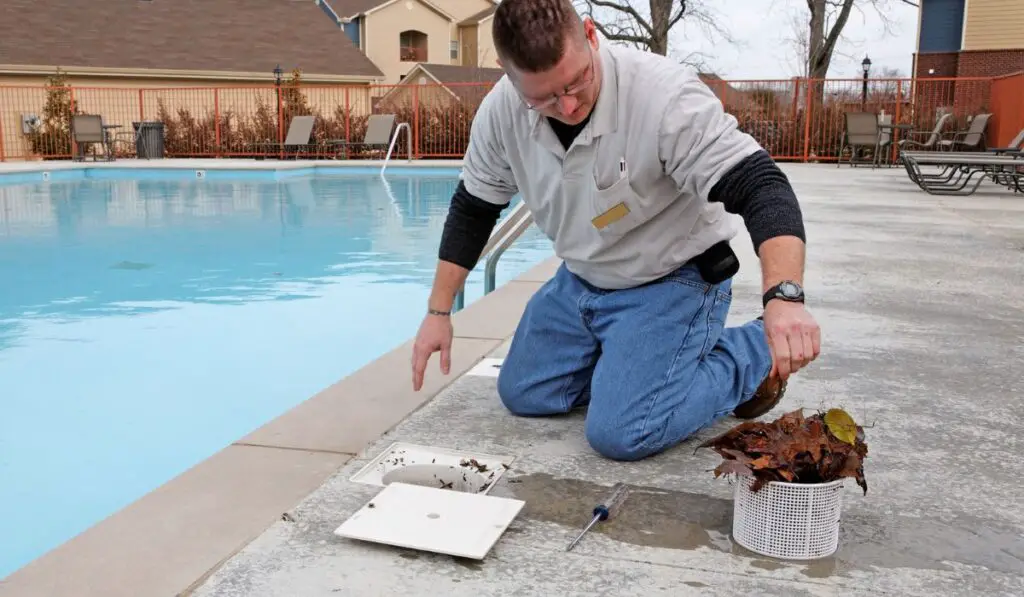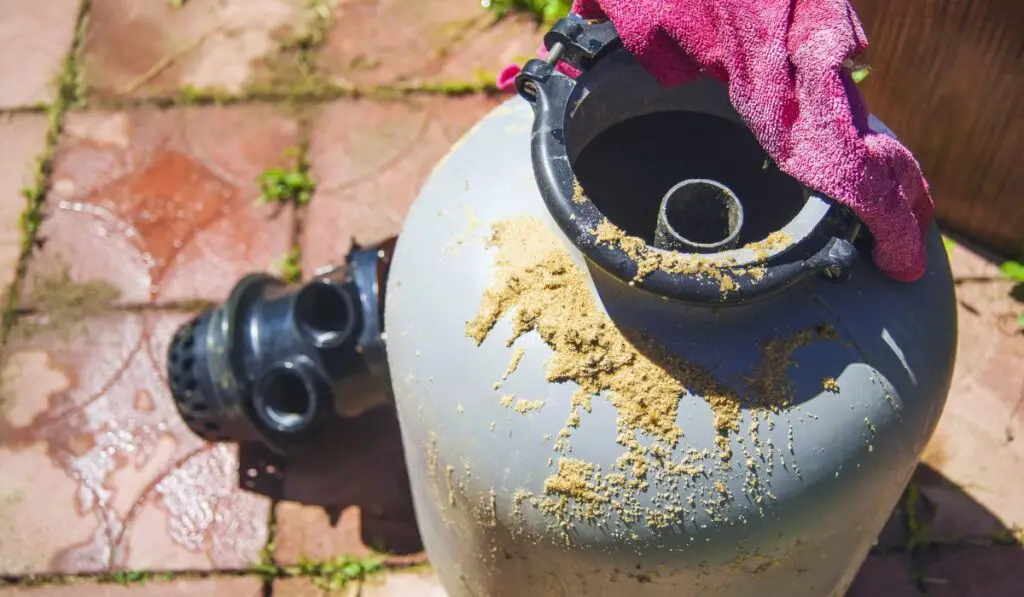Keeping your swimming pool in the best shape possible can seem like an overwhelming task with everything that has to be done. Backwashing your pool’s filter is one of those tasks that will help keep the condition of your pool in tip-top shape.
Backwashing your pool is the process of reversing the flow into the pool’s filter to clean it. Backwashing should be performed on a weekly basis to keep your pool in good shape. While backwashing doesn’t remove chlorine from your pool, it does remove some water, so test the water before you swim.
Not sure how often you need to backwash your backyard swimming pool? Let’s look at what backwashing is and what can happen if you do not backwash your pool often enough.
What is Backwashing?

The filters in your swimming pool are designed to ensure that various organic materials are kept out of the pool itself. However, over time, larger particles can build up in the filter and can cause the filter to work less effectively.
Backwashing is the process of reversing the flow of the water in the filter so that the larger particles can be removed as well. This type of filtering causes these particles to be pushed out through the wastewater line instead of staying in the filter itself.
Overall the process of backwashing allows you to not only keep small particles out of your pool but the larger particles from building up in your filter. Since the process of backwashing is designed to clean out the filter, you can rest assured that your filter is working properly at all times.
How Often Does a Pool Need to Be Backwashed?
Many swimming pool owners want to know exactly how often they should backwash their pool to keep it in the best condition possible. While the answer to this question can be pretty straightforward, there are other considerations to keep in mind.
For the most part, the frequency at which you backwash your pool will depend entirely on how often the pool is being used. If it is being used daily, you may have to rely on your filter settings to tell you when to perform a backwash.
In most cases, however, it is recommended that you do a backwash of your pool at least once a week. This should coincide with your regularly scheduled maintenance which means you will not have to do it at other times.
Additionally, you will also need to keep a close eye on the functioning of your pool’s filter to ensure that it is working properly. If it seems to be suctioning less, you may want to backwash your pool sooner than you originally planned.
If you live in an area where rainstorms occur, you may also want to consider scheduling a backwash of the filter after a big storm. This is especially important since with a rainstorm often various debris are introduced into the pool that can wreak havoc on the chemistry if left for a long time.
The bottom line is that while you do not want to backwash your pool too often, you will need to do so regularly. This will keep your pool working in the best conditions possible and will keep your swimmers safe from various debris.
What Happens if You Don’t Backwash Your Pool Filters?
While you do not want to backwash your pool filters too often, not doing a backwash at all can cause damage to the filters over time. There are specific consequences for not backwashing your pool filters, including the pump becoming clogged, the suction reducing, and the pressure being overworked.
Since the idea of backwashing is to keep your filter in the best shape possible to ensure that your swimming pool stays clean, not backwashing can cause a lot of problems. One of the most common problems is that the filter, over time, will become clogged with all of the debris being trapped inside.
Not to mention, when you don’t backwash your pool filters, over time, the suction in the filter can be reduced exponentially. This means that the overall functionality of the filter is reduced, thus causing it to work less efficiently and leaving you with a dirty pool.
Another effect of not backwashing your pool filter is that the pressure between the filter and the pump can be increased, which can cause major damage. This damage often results in the pump wearing out and not working properly, which means you will have to replace it more often, and this is not a cheap part of your pool.
This is why, overall, it is just better to backwash your pool on a regular basis so you can continue to enjoy it for years to come!
Does Backwashing Remove Chlorine?
The simple answer to this question is that, no, backwashing should not overtly affect the chlorine in the pool. However, since there is some water loss, you may find that some of the chlorine can be lost if you add more water that doesn’t contain chlorine.
Since it is recommended that you perform a backwash with your regularly scheduled maintenance of the pool, then you will likely be able to ensure that the chemistry stays in balance. Even though backwashing does remove some of the overall water, there is not enough lost to consider it to be dangerous.
When doing your maintenance on the swimming pool, you will want to vacuum out your pool first and then backwash your filter. Once this is complete, you can check the chemistry of the pool using a test kit(on Amazon) to ensure that nothing has changed in the chemical balance.
How to Change the Sand in Your Filters

In most cases, if you are performing a backwash on your swimming pool filters regularly, you will likely have a clean and clear pool. However, there are times when you may notice that despite your regular maintenance and backwashing, your pool still seems to be cloudy.
For the most part, this is often caused by the sand in the filter being dirty and not being able to successfully filter out various debris. While this does not happen often, it is recommended that you change out the sand in your pool’s filters at least every 3-5 years for best results..
To do this, you will need to follow simple instructions to change the sand in your filter:
- Turn the pump filter off.
- Release the pressure in the filter by opening it up.
- Open the filter drain and use a hose to drain the water.
- Remove the collar for the sand filter.
- Take the valve head to open up the filter.
- Use a shop vac to remove the sand from the filter, taking precautions not to break the parts of the filter.
- Wash the barrel of the filter completely.
- Put tape on the pipe hole to keep new sand from getting in.
- Pour the appropriate amount of sand into the filter, according to how much it holds.
- Replace the drain cap and replace the water.
- Turn the pump on.
Following these instructions will provide you with the proper steps to change out the sand in your filter. Keep in mind that this is a process that should be done about every 3-5 years to keep your swimming pool pump working properly.
If you have questions about backwashing or changing the sand in your filter and don’t feel confident enough to do it on your own, don’t be afraid to call a professional for help!
